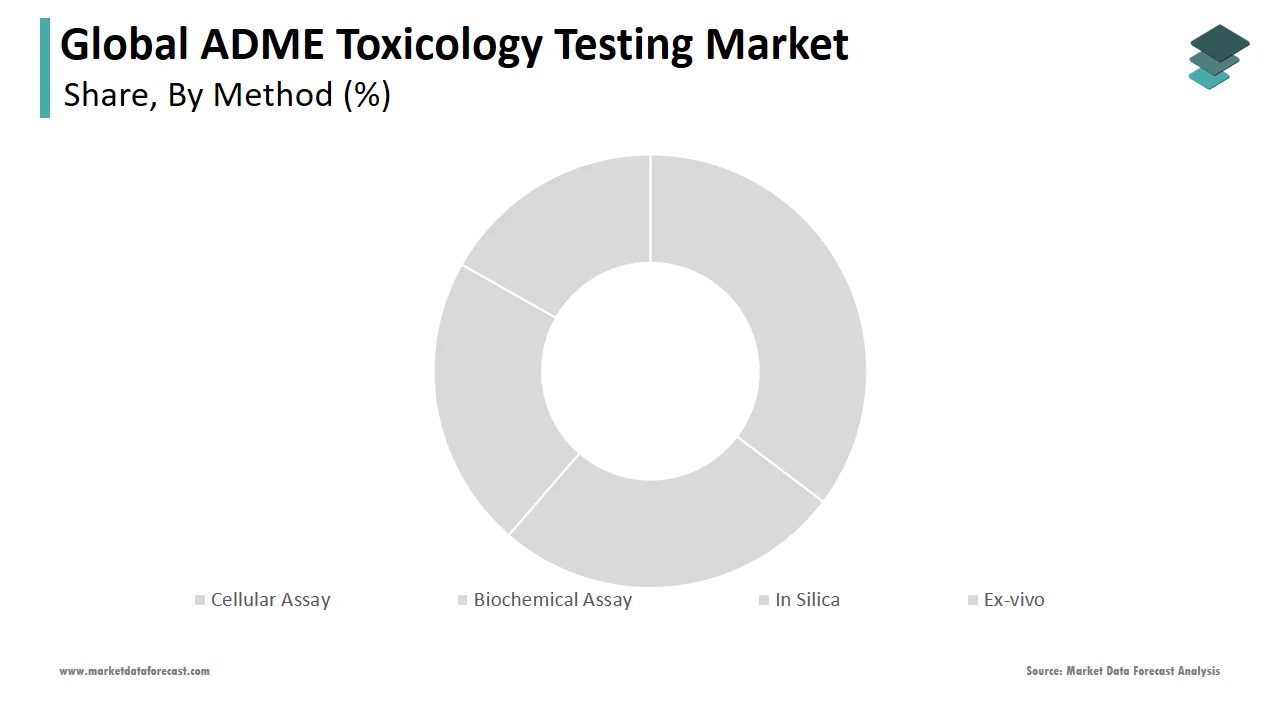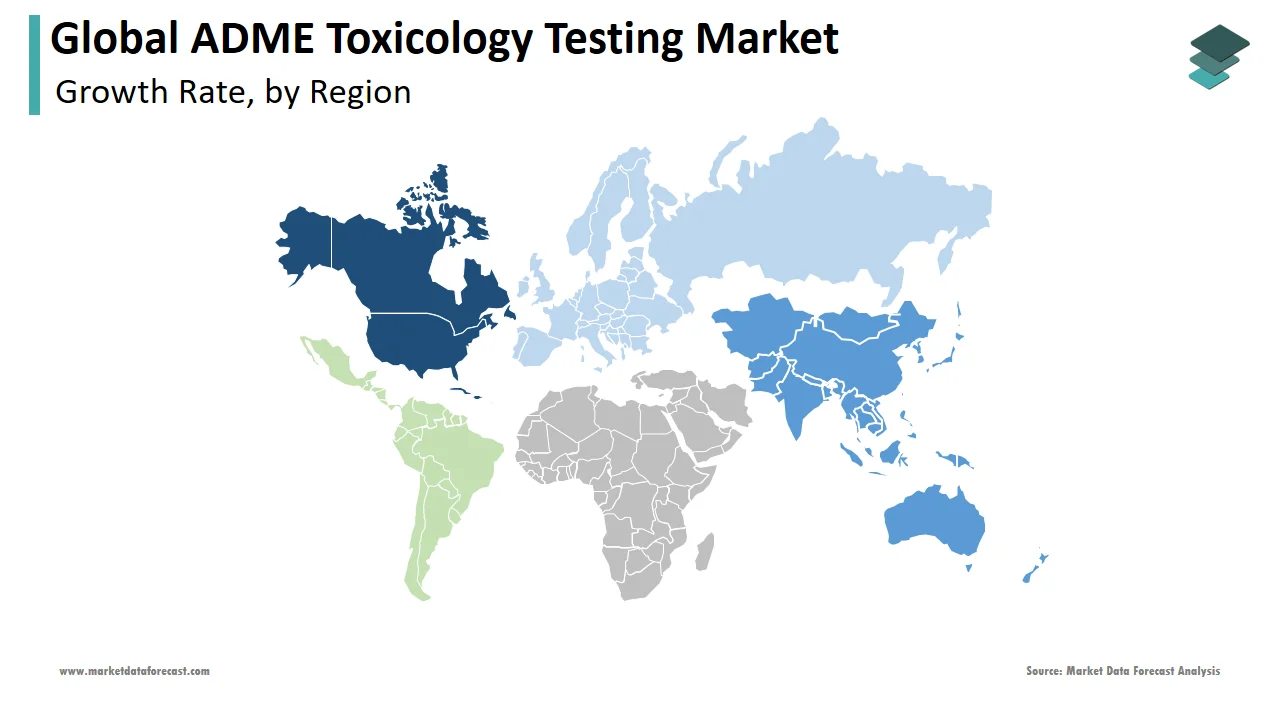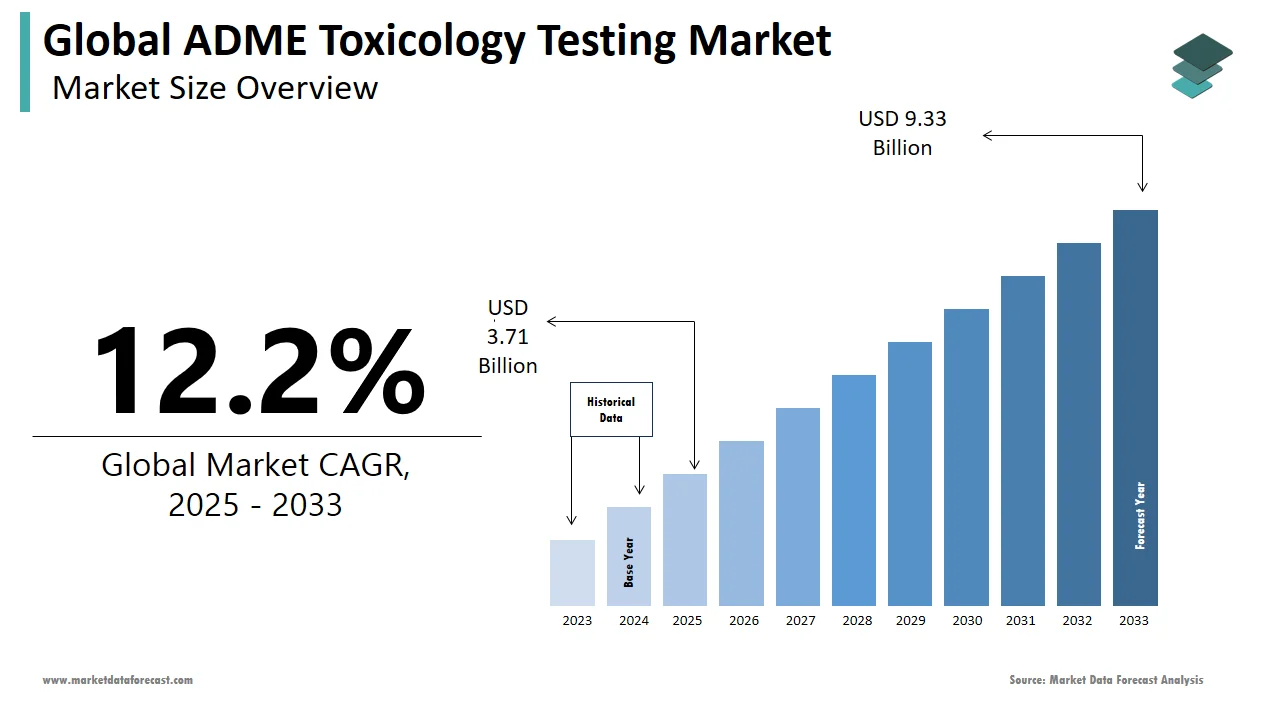Global ADME Toxicology Testing Market Size, Share, Trends & Growth Forecast Report By Method (Cellular Assay, Biochemical Assay, In Silica and Ex-vivo), Technology (Cell Culture, High Throughput, Molecular Imaging and OMICS Technology), End-Users, Application, and Region (North America, Europe, Asia-Pacific, Latin America, Middle East and Africa), Industry Analysis From 2025 To 2033.
Global ADME Toxicology Testing Market Size
The size of the global ADME toxicology testing market was worth USD 3.31 billion in 2024. The global market is anticipated to grow at a CAGR of 12.2% from 2025 to 2033 and be worth USD 9.33 billion by 2033 from USD 3.71 billion in 2025.
MARKET DRIVERS
The growing prevalence of various diseases and increasing demand for the discovery of new drugs to lower the risk of death and other effects are primarily propelling the global ADME toxicology testing market growth.
The global ADME toxicology testing market receives support from technological advancements such as in silico techniques that use computer-based testing methods for faster performance to grow further. In addition, cell-based assays are gaining much traction worldwide, and this demand will continue to grow. During the forecast period, ongoing R&D in ADME toxicology testing is further anticipated to boost the market’s growth rate. North America currently has the largest share of the global ADME toxicology testing market, and it is projected to continue to do so.
The increasing support from various governments in terms of investments to launch various new products has a favorable impact on the growth of the global ADME toxicology testing market. Furthermore, the adoption of new techniques in finding a way to launch different products in significantly less time and with lower side effects provides growth opportunities for the market. In addition, the reduced cost of affordable medicines by ordinary people due to ADME toxicology testing is lavishing the market's chance to grow extensively.
MARKET RESTRAINTS
However, fluctuations in the availability of raw materials hamper the market's growth. In addition, the increasing prices of pharmaceutical products and violations in following rules and regulations by agencies are challenging factors in the global ADME toxicology testing market. Although several of these techniques require advanced knowledge and software that can manage and store large volumes of data quickly, the lack of in-vitro models to detect autoimmunity and immune stimulation might restrict market expansion to some extent. Furthermore, the market's growth is likely hampered by a shortage of efficient software to manage automated robotic arms and liquid handling systems. In the United States, the COVID-19 outbreak has been growing exponentially. This has decreased daily patient visits to hospitals and clinics and the number of profiling studies performed under normal conditions. To some extent, this is expected to stifle the global ADME toxicology testing market growth.
High research costs and strict government rules and regulations associated with ADME toxicology testing, on the other hand, are significant challenges to the market's expansion. In addition, a lack of understanding of the underlying scientific principles and the proper technique selection results in various direct and indirect costs. As a result, highly skilled personnel are required to create, validate, service, and troubleshoot. These are the challenges faced by the ADME toxicology Testing Market.
COVID-19 impact on the global ADME toxicology testing market
Health supplies and equipment are at risk of running out due to the rapid spread of COVID-19. COVID-19 hasn't significantly affected raw material supplies for toxicology technologies, aside from transportation delays caused by travel restrictions and some driver shortage problems. However, the demand for toxicology technologies, especially diagnostic assays and PCR, has increased with the demand for faster testing and research. As a result, various diagnostic kits, such as PCR testing panels and medications, have been licensed by the FDA for emergency use in COVID-19 testing and diagnostics. The ADME Toxicology Screening System is an interactive workstation that defines drug molecules' properties in absorption, distribution, metabolism, and excretion. Furthermore, due to the widespread outbreak of coronavirus disease (COVID-19) and the lack of an effective vaccine or treatment, ADME toxicology testing is being used to assess existing drugs' efficacy as an alternative treatment and is increasing market growth.
REPORT COVERAGE
|
REPORT METRIC |
DETAILS |
|
Market Size Available |
2024 to 2033 |
|
Base Year |
2024 |
|
Forecast Period |
2025 to 2033 |
|
CAGR |
12.2% |
|
Segments Covered |
By Method, Technology, Application, End-Users, and Region. |
|
Various Analyses Covered |
Global, Regional, and country-level analysis; Segment-Level Analysis, DROC; PESTLE Analysis; Porter’s Five Forces Analysis, Competitive Landscape; Analyst Overview of Investment Opportunities |
|
Regions Covered |
North America, Europe, APAC, Latin America, Middle East & Africa |
|
Market Leaders Profiled |
Promega Corporation, Agilent Technologies, Inc., Thermo Fisher Scientific, Inc., Bio-Rad Laboratories, Inc., Beckman Coulter, Inc., Cellartis AB, Cyprotex PLC., Life Technologies Corporation, Optivia Biotechnology, Inc., Accelrys, Inc., Molecular Discovery Ltd., Cyprotex PLC and MultiCASE, Inc., and Others. |
SEGMENTAL ANALYSIS
By Method Insights

Based on the method, the cellular assay segment is expected to occupy a substantial share of the global ADME toxicology testing market during the forecast period. Factors such as accurate, highly detailed methods drive the segment’s growth. These assays don’t eliminate clinical experiments, but they make human research successful with less risky action to achieve better results.
By Technology Insights
Based on technology, the cell culture segment is predicted to have a dominant share in the global ADME toxicology testing market during the forecast period. From 2D cell culture to 3D cell culture, the transformation is completed where 3D shows the visual result and the skill to test in lower volumes. Therefore, all segments under technologies are expected to have a healthy growth rate during the forecast period to address the growing need for drugs to treat various diseases.
By Application Insights
Based on the application, the systemic toxicity segment held a significant share of the ADME toxicology testing market in 2024. It continued its power and influence throughout the forecast period due to the upward or forward movement in Cardiology's toxicity studies. Systemic toxicity continues to have its power and influence throughout the period. It is the most chosen drug distribution method, which is also one of the crucial causes of toxic reactions. Renal and Hepatotoxicity are the major applications to witness rapid growth in the future.
REGIONAL ANALYSIS

Geographically, the global ADME toxicology testing market is looking forward to a steady pace throughout the forecast period. The North American ADME Toxicology Testing Market is positioned first to hold the global market's highest shares. The quick adoption of the latest technologies and maintaining strict management rules by the government propel the market demand in this region. The U.S. market is anticipated to grow significantly from the North American region during the forecast period.
On the other hand, the Asia-Pacific region is predicted to grow at a significant CAGR during the forecast period owing to the changes in the policies favoring pharmaceutical companies and the growing number of research institutes. The European market is projected to showcase a healthy CAGR and capture a substantial share of the global market recently.
Regions such as Latin America, the Middle East, and Africa are predicted to witness a steady growth rate during the forecast period. In these regions, the healthcare infrastructure has improved over the past few years, and investments from developed countries are growing. As a result, an increase in the patient count has been noticed, which is expected to boost the ADME toxicology testing market in these regions.
KEY MARKET PLAYERS
Some of the noteworthy companies dominating the global ADME toxicology testing market profiled in this report are Promega Corporation, Agilent Technologies, Inc., Thermo Fisher Scientific, Inc., Bio-Rad Laboratories, Inc., Beckman Coulter, Inc., Cellartis AB, Cyprotex PLC., Life Technologies Corporation, Optivia Biotechnology, Inc., Accelrys, Inc., Molecular Discovery Ltd., Cyprotex PLC and MultiCASE, Inc.
RECENT MARKET HAPPENINGS
- In February 2020, QLinea AB announced that the company had partnered with Thermo Fischer scientific to commercialize ASTar.
- In February 2020, TFS introduced the IonTorrent CarrierSeq ECS Kit for expanding their careers.
- In February 2020, Thermo Fisher collaborated with the NanoPin diagnostic platform for rapid and quantified results from patient blood-based infectious disease detection technology by developing liquid chromatography-mass spectrometry (LC-MS) based workflows.
MARKET SEGMENTATION
This research report on the global ADME toxicology testing market has been segmented and sub-segmented based on the method, technology, application, end-user, and region.
By Method
- Cellular Assay
- Biochemical Assay
- In Silica
- Ex-vivo
By Technology
- Cell Culture
- High Throughput
- Molecular Imaging
- OMICS Technology
By Application
- Systemic Toxicity
- Renal Toxicity
- Hepatotoxicity
- Neurotoxicity
- Others
By End-Users
- Hospitals and clinics
- Diagnostic centers
- Pathological Labs
- Others
By Region
- North America
- The U.S.
- Canada
- Europe
- UK
- Germany
- France
- Spain
- Italy
- Rest of EU
- Asia-Pacific
- India
- China
- Japan
- Australia
- South Korea
- Rest of Asia Pacific
- Latin America
- Brazil
- Mexico
- Argentina
- Chile
- Rest of Latin America
- Middle East
- Africa
Frequently Asked Questions
How much is the global ADME toxicology testing market going to be worth by 2032?
Promega Corporation, Agilent Technologies, Inc., Thermo Fisher Scientific, Inc., Bio-Rad Laboratories, Inc., Beckman Coulter, Inc., Cellartis AB, Cyprotex PLC., Life Technologies Corporation, Optivia Biotechnology, Inc., Accelrys, Inc., Molecular Discovery Ltd., Cyprotex PLC, and MultiCASE, Inc. are some of the key players in the ADME toxicology testing market.
Which region led the ADME toxicology testing market in 2024?
Yes, we have studied and included the COVID-19 impact on the global ADME toxicology testing market in this report.
Who are the major players in the global ADME toxicology testing market?
A significant portion of the global ADME toxicology testing market share was registered by the North American region in 2024.
Related Reports
Access the study in MULTIPLE FORMATS
Purchase options starting from $ 2500
Didn’t find what you’re looking for?
TALK TO OUR ANALYST TEAM
Need something within your budget?
NO WORRIES! WE GOT YOU COVERED!
Call us on: +1 888 702 9696 (U.S Toll Free)
Write to us: [email protected]

